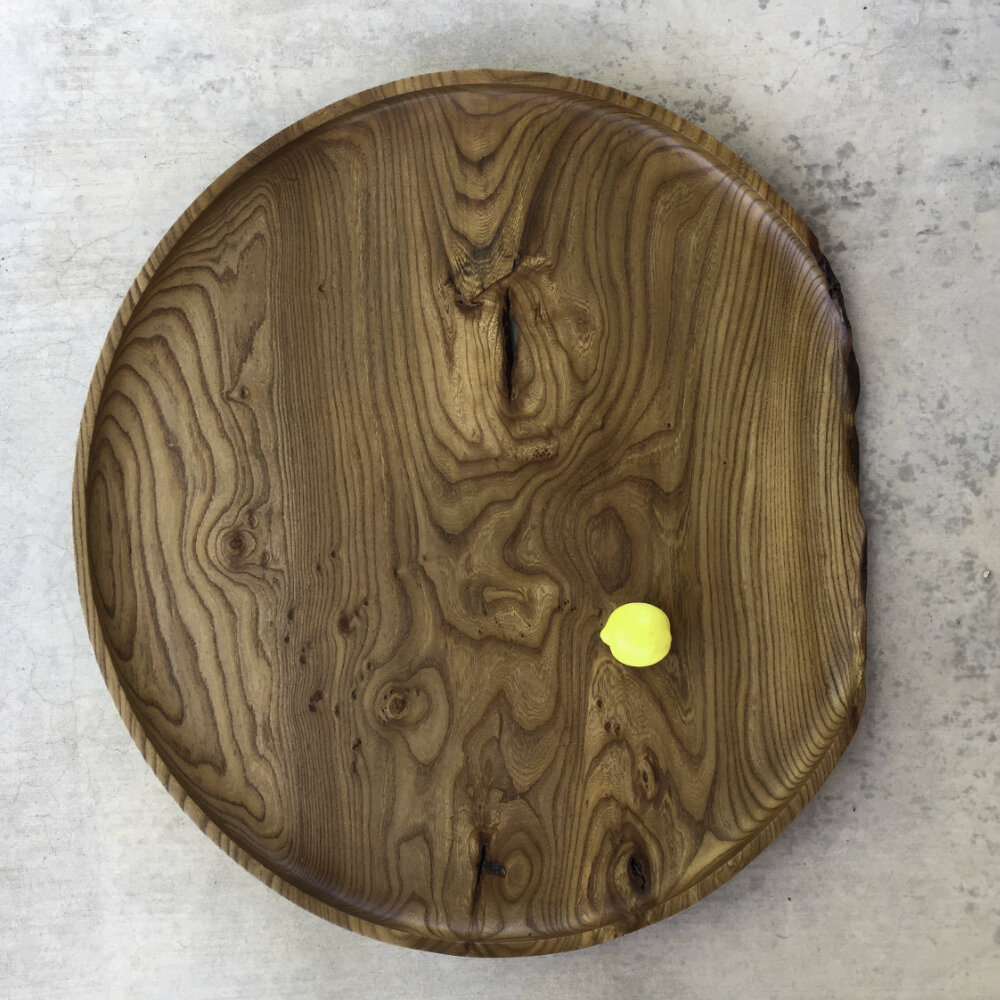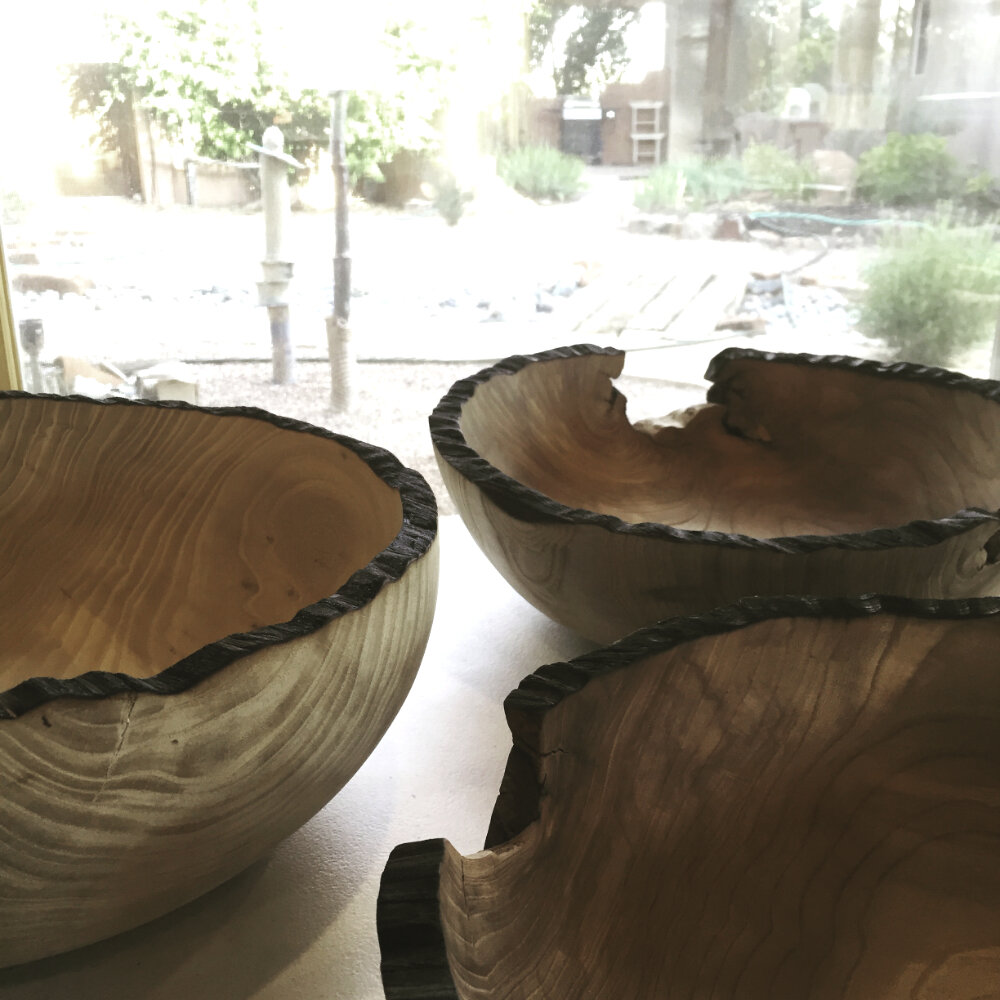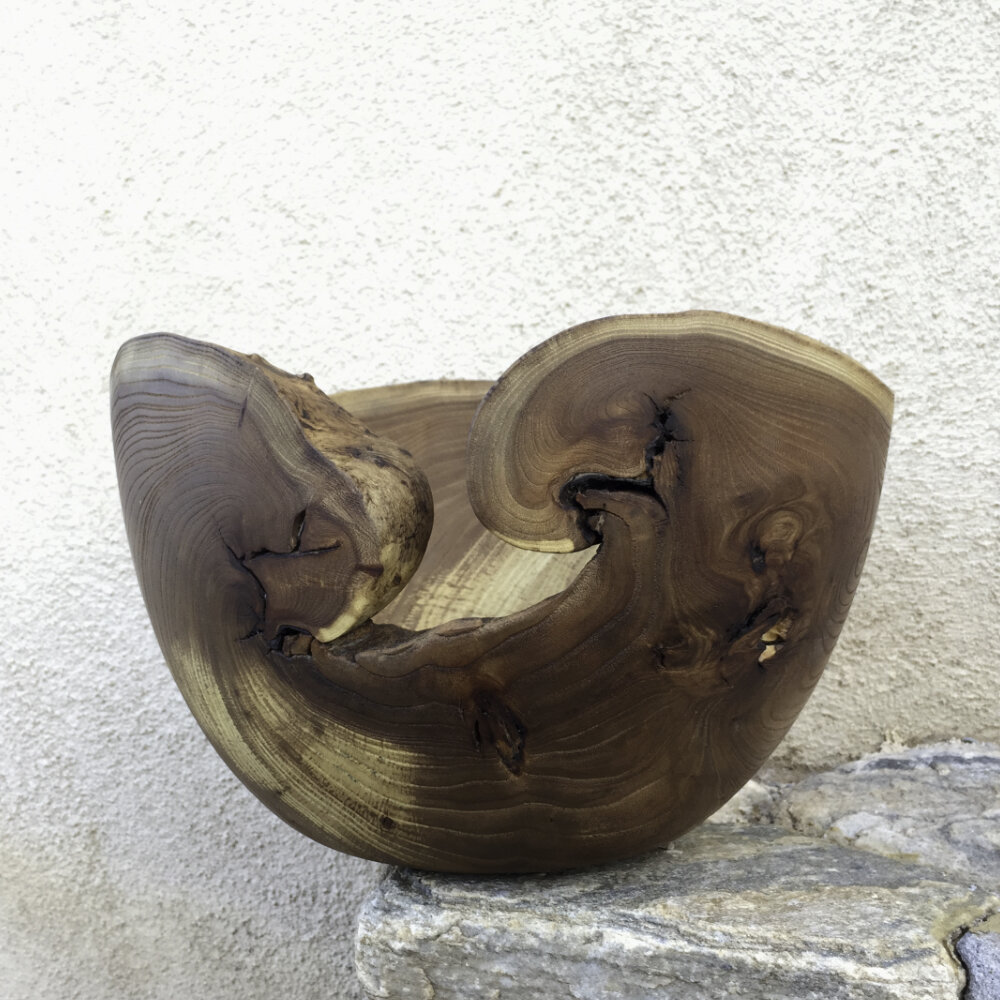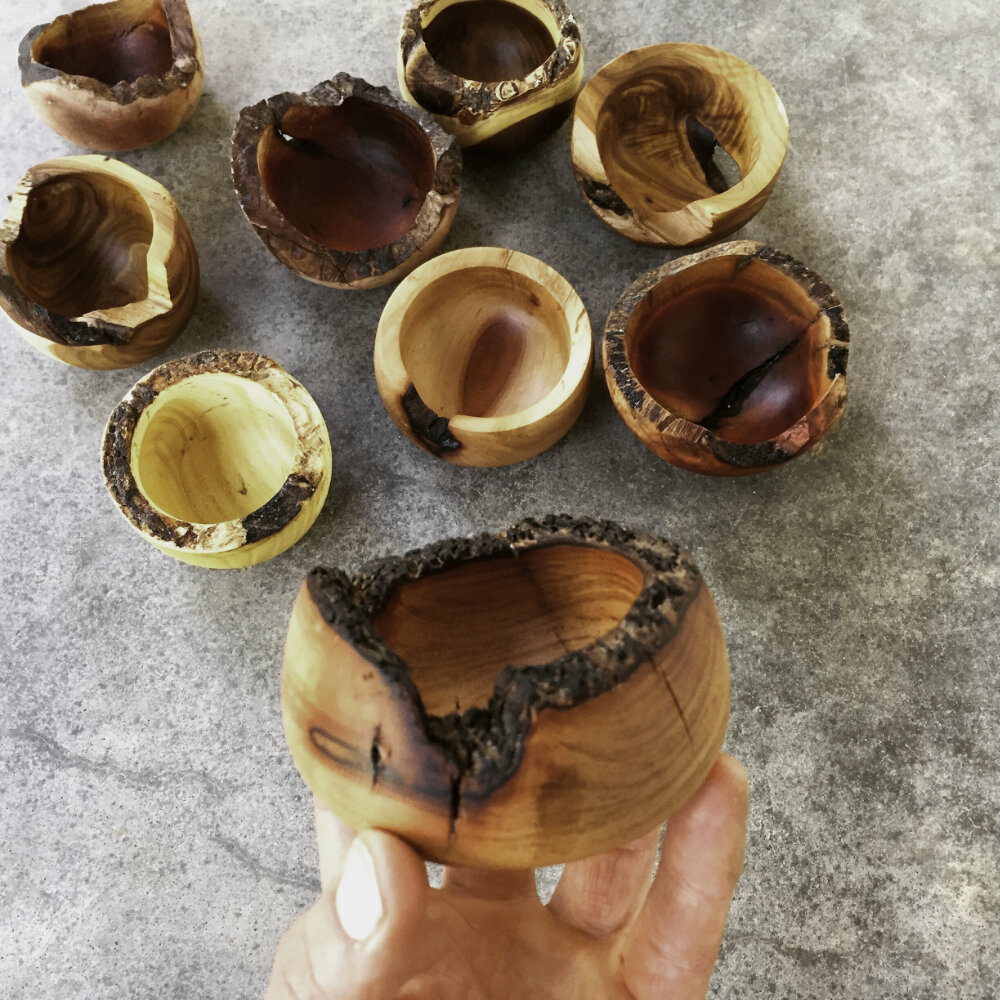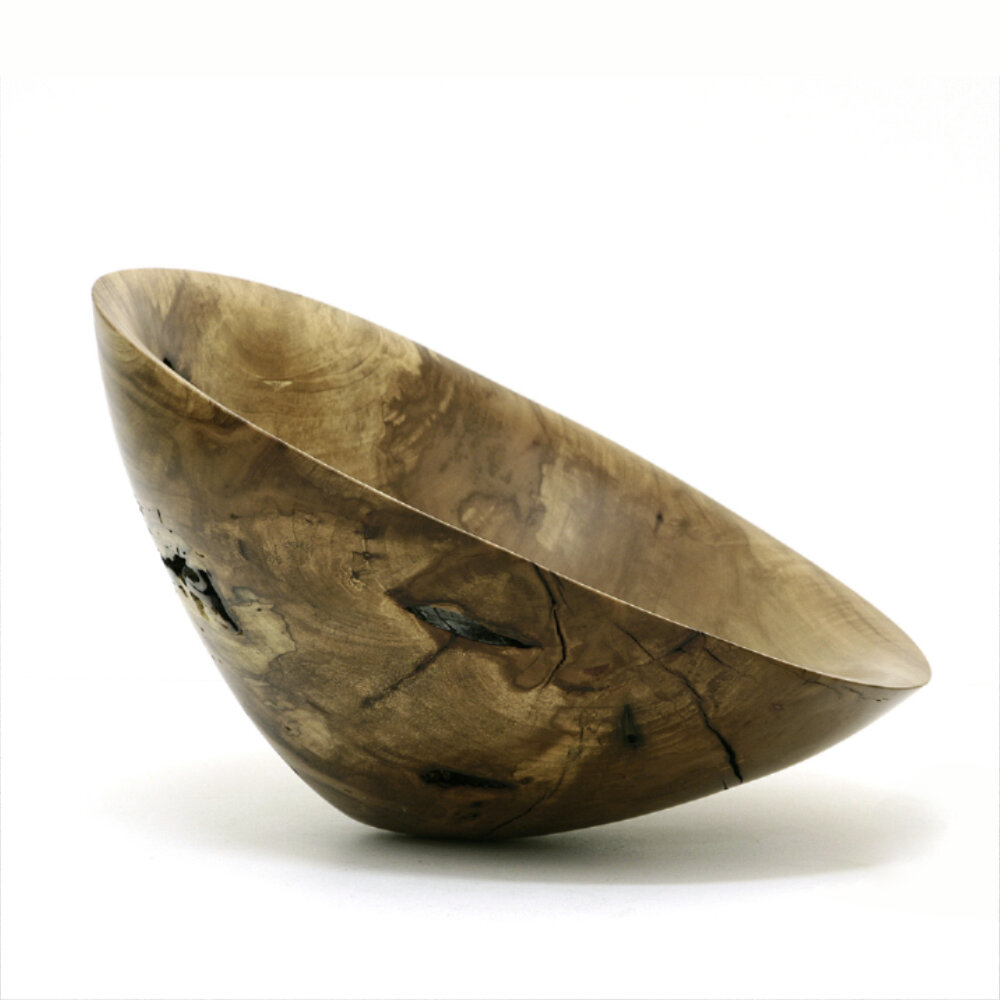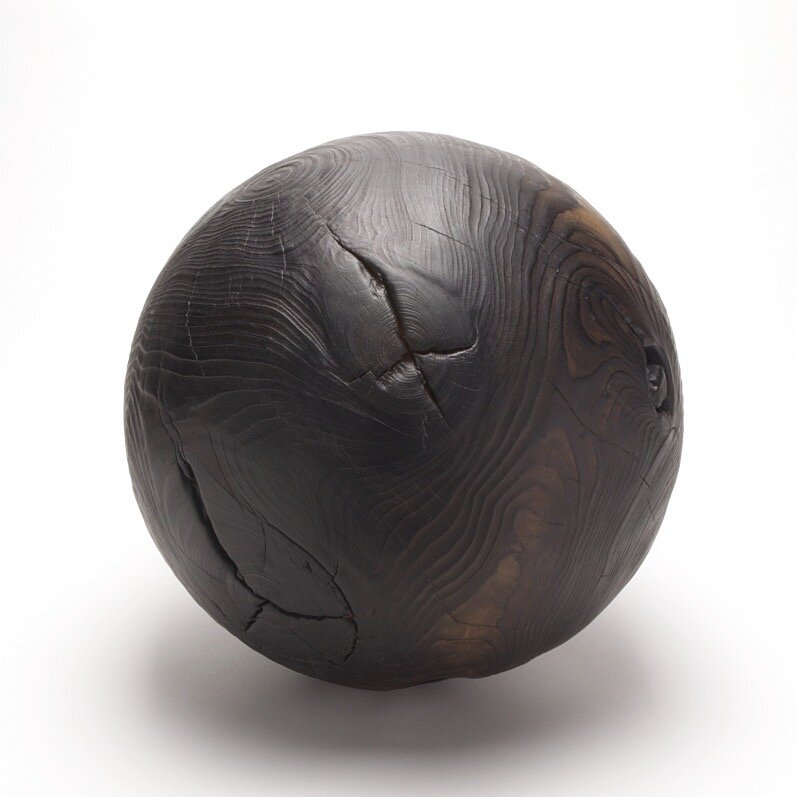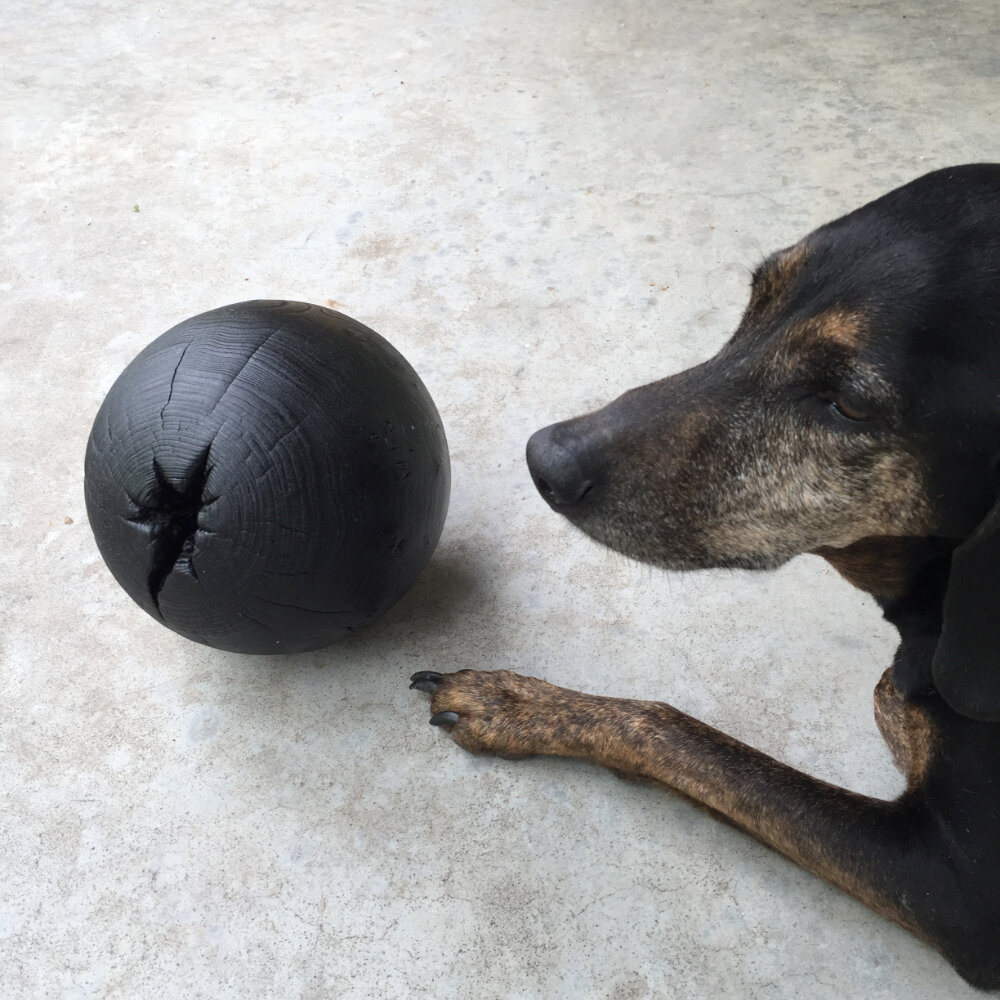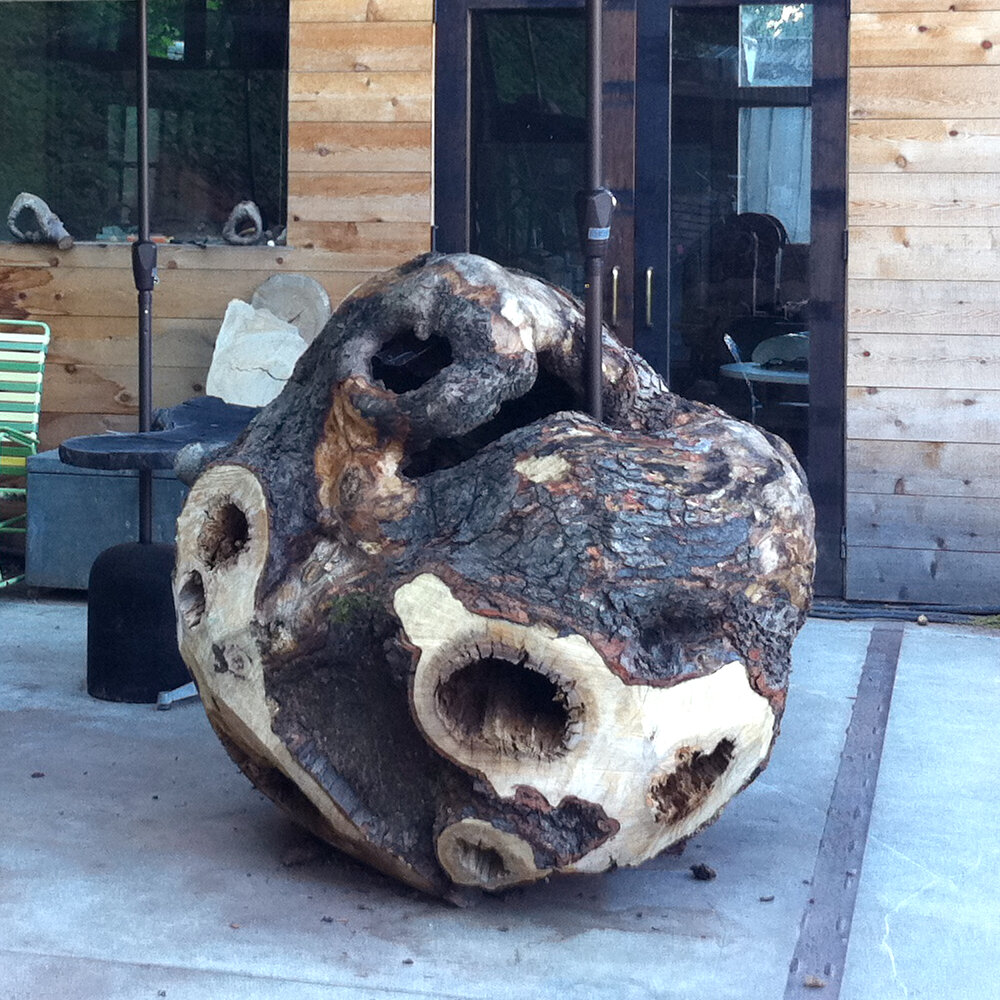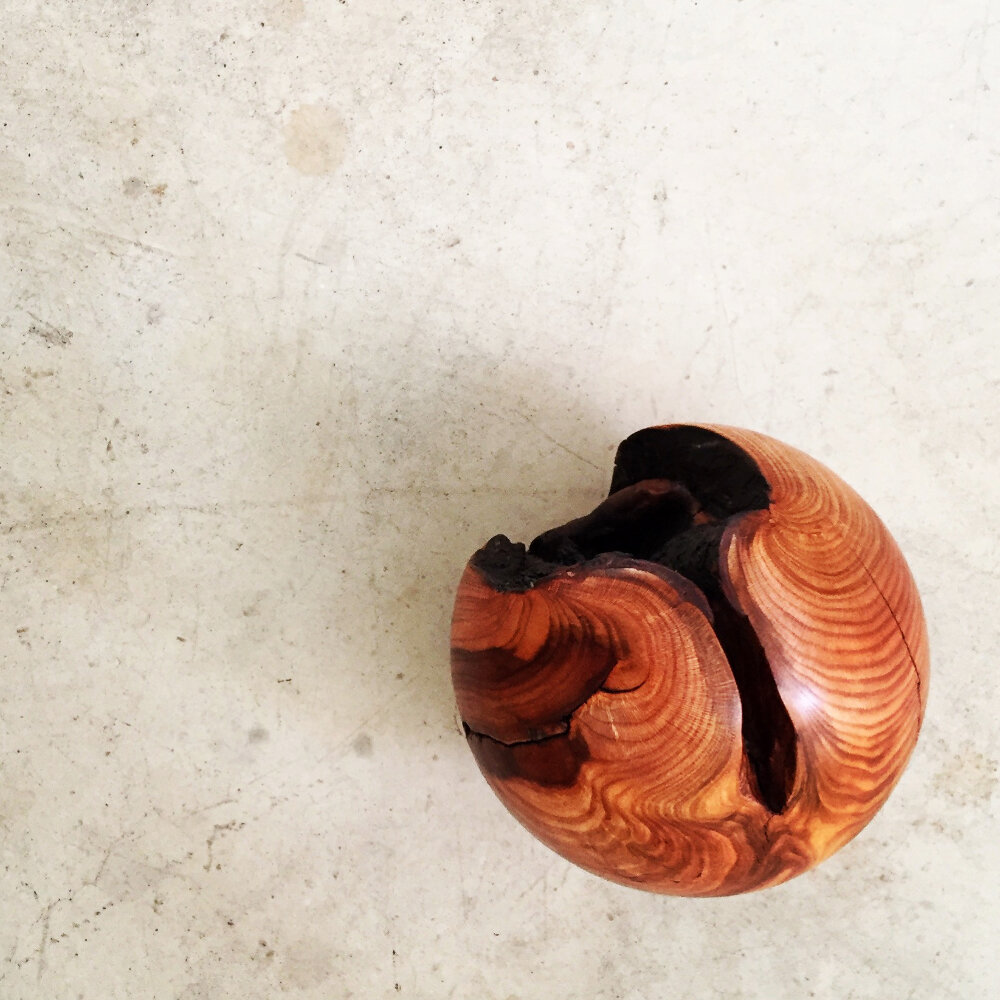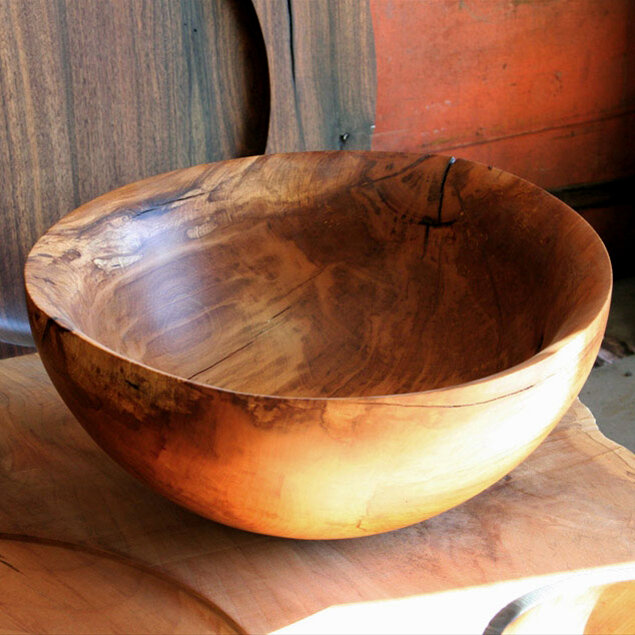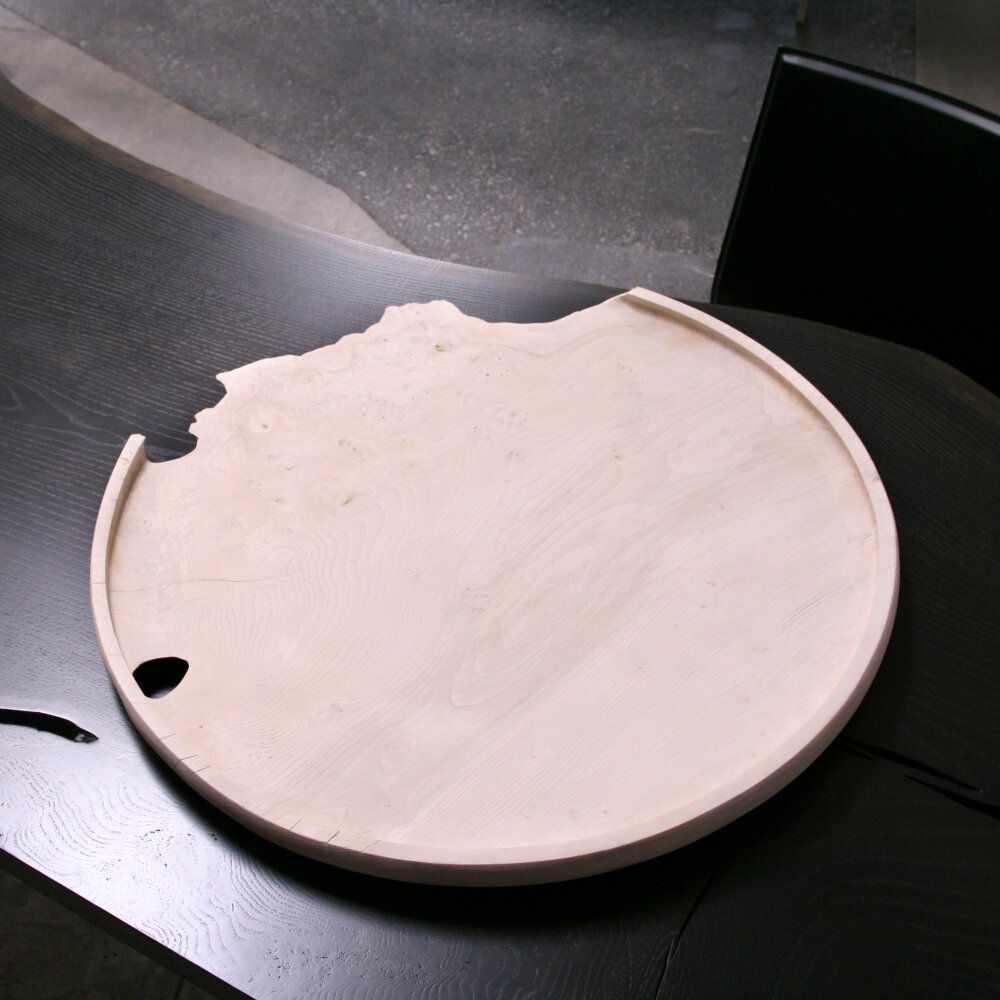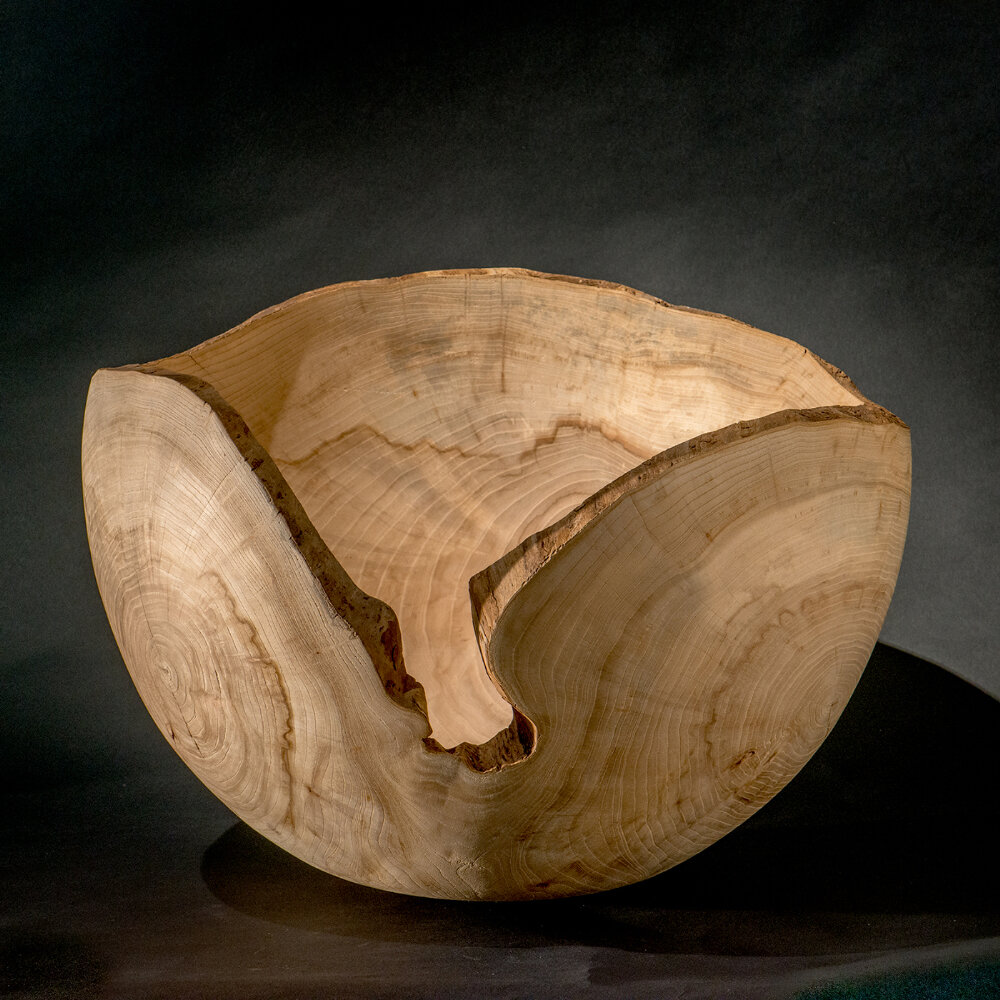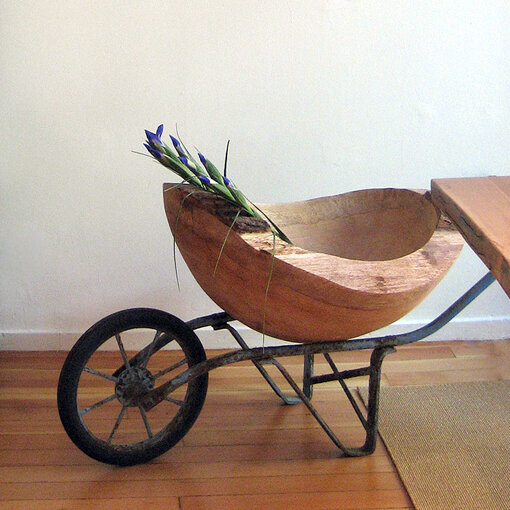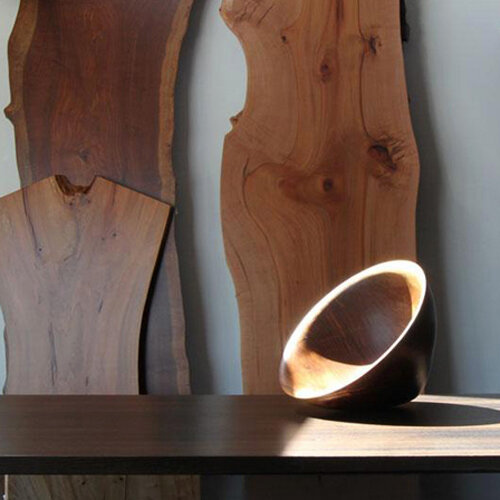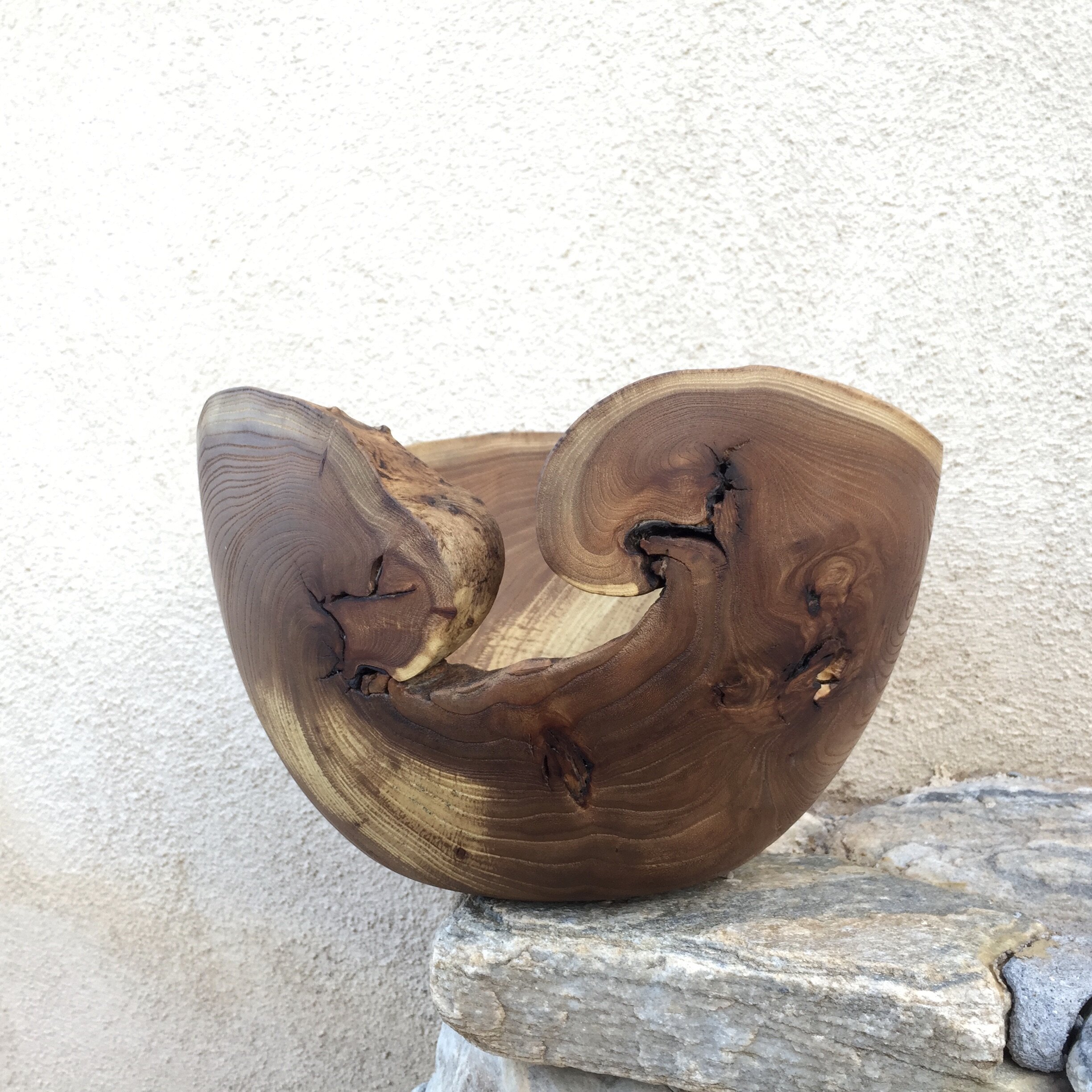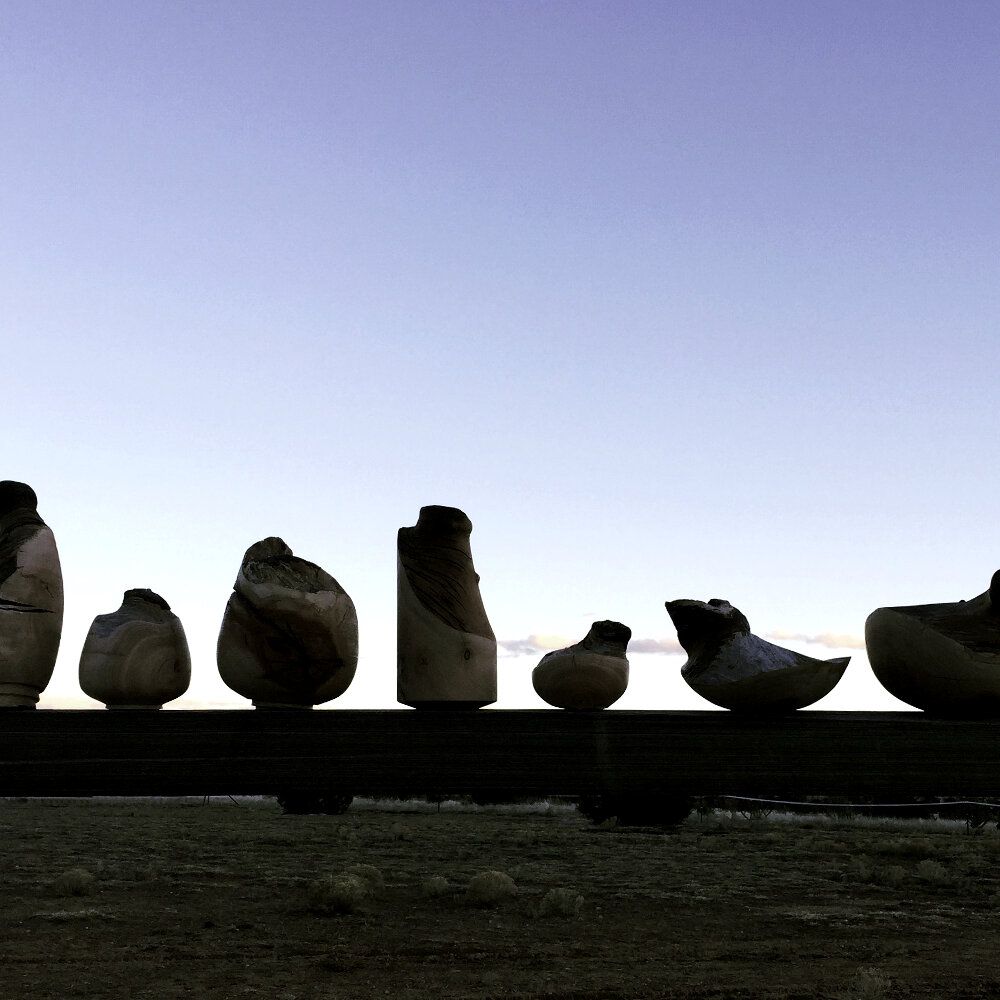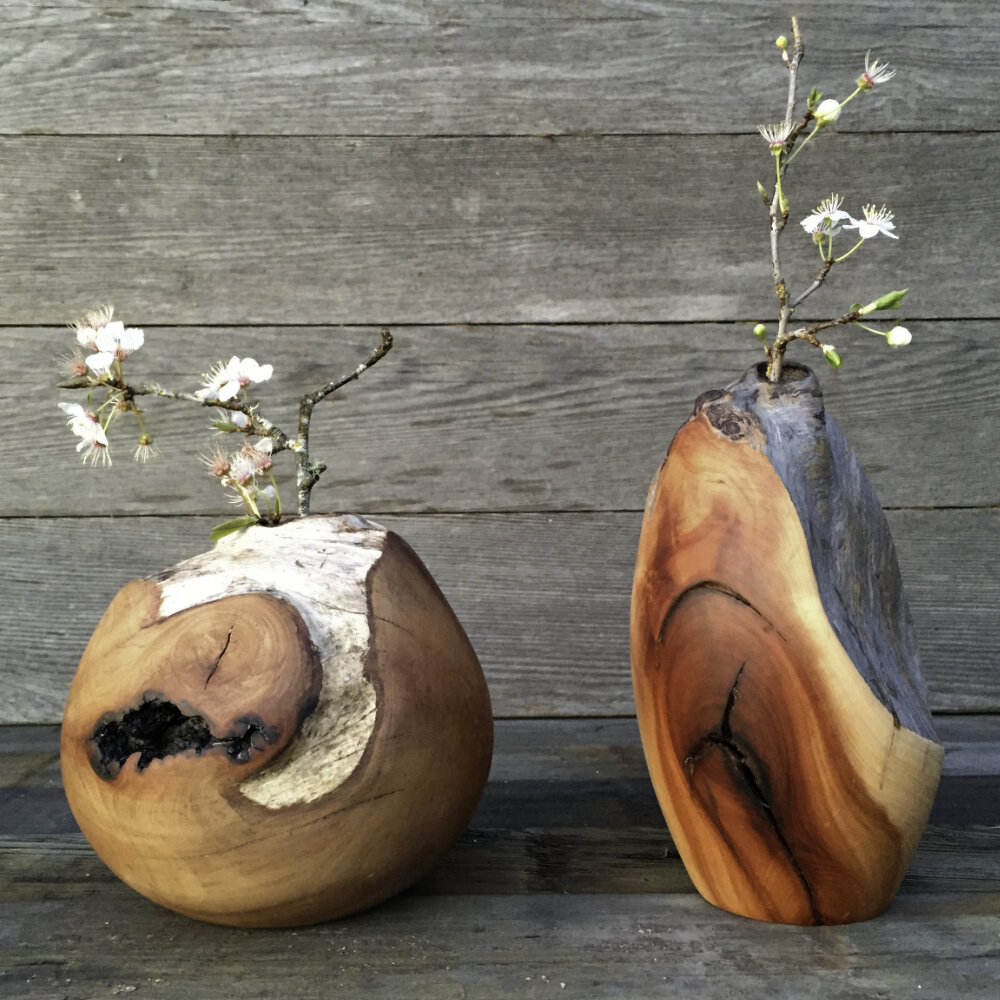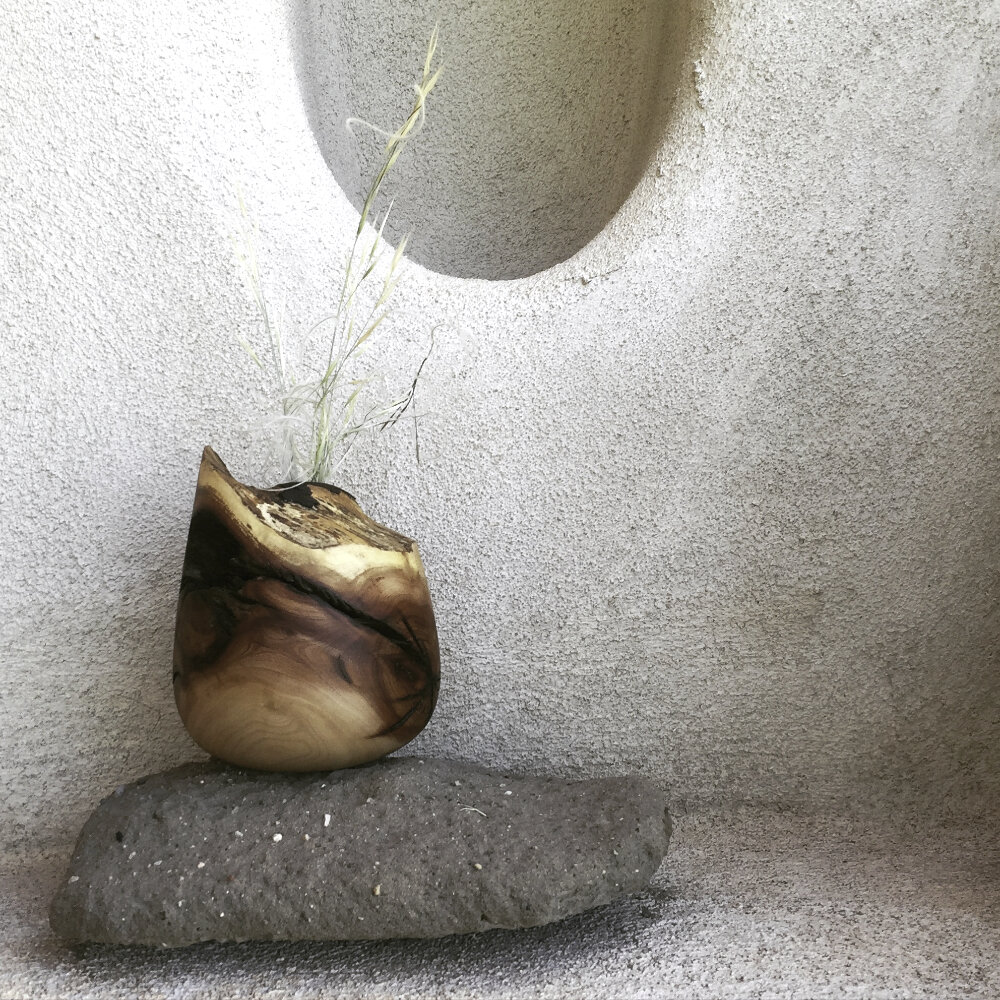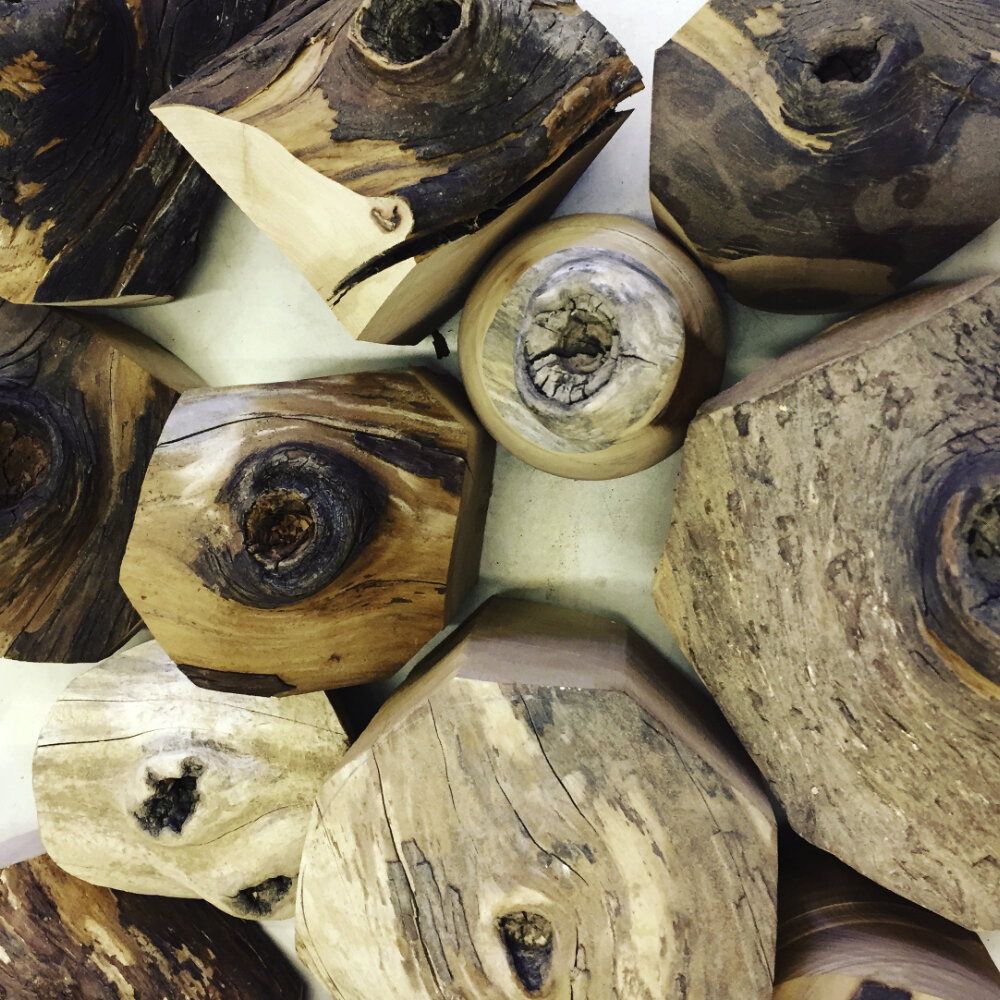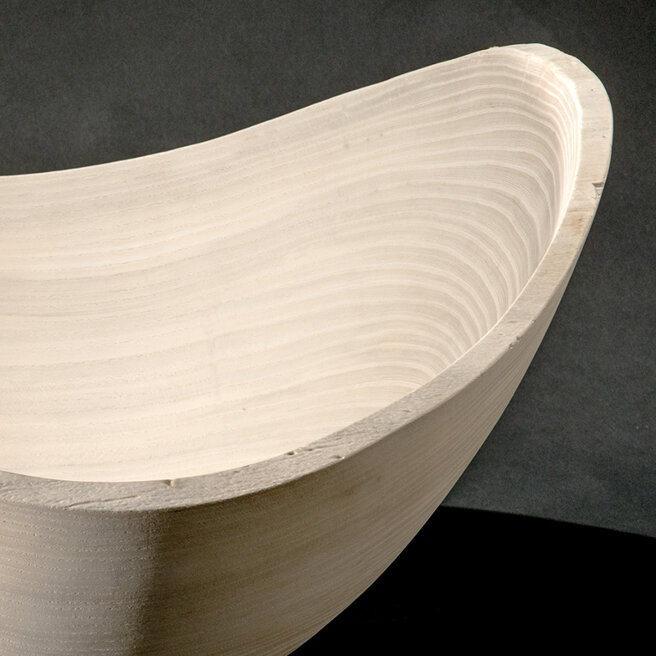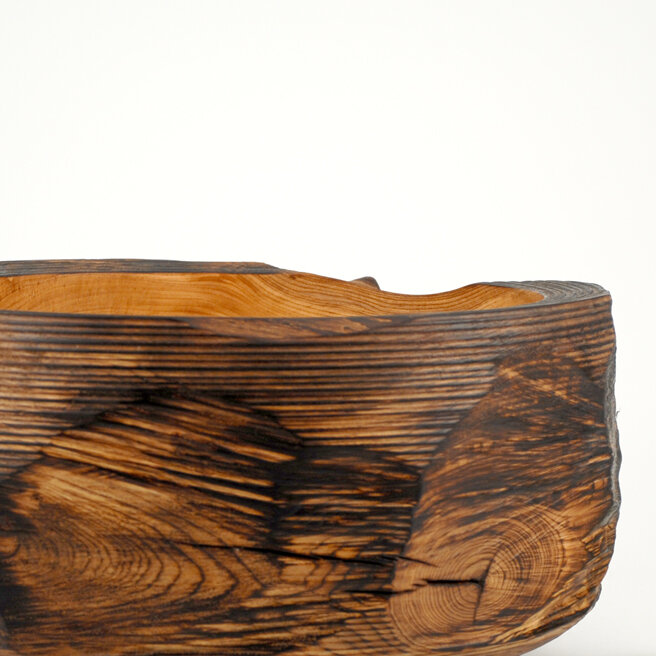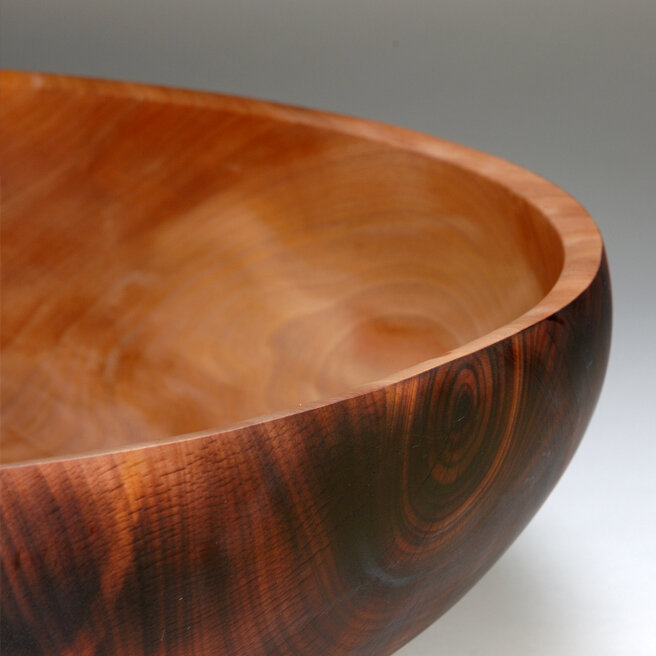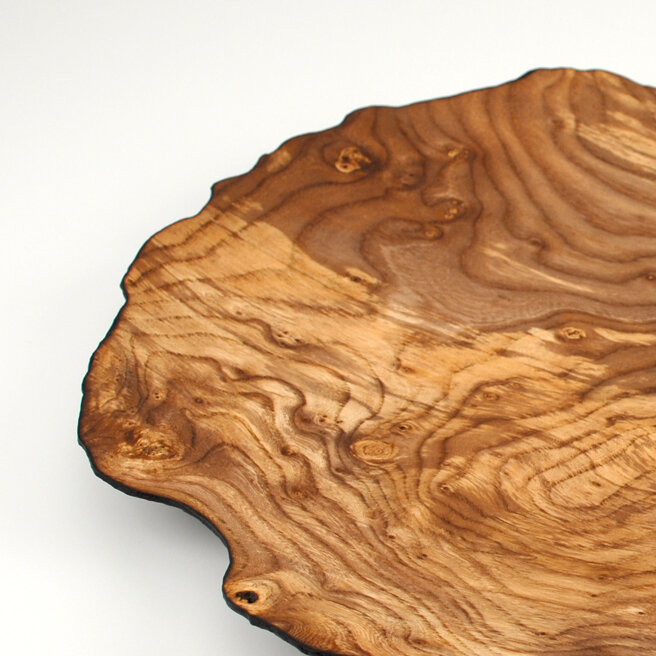TURNED WOOD OBJECTS
Everything I make is a conversation with a tree. Because every tree is unique, so is every form. My initial chainsaw cuts reveal the character of the wood, from burls to bug trails to contrasting colors between heartwood and sapwood. When the log goes on the lathe, I carve through the rings with my chisels, each ring a year gone by. Each layer is a discovery, and these discoveries inform the shape of the object. The form evolves as I work—I go where the wood leads me.
ARCHETYPAL FORMS
There are familiar themes in my work – these are the Archetypal Forms. Over time I began referring to them by name. First, the deep, pail-like bowl became the bucket. After an inspired visit to Hawaii, the bulbous calabash emerged. Later, with the use of fire, the ruffles and the primitives came to light. What do you call a bowl that rolls around on the table? A wobbler, of course!
BG LATHE
Since 2005 I have relied on BG (big girl), a massive home-built lathe to turn the bowls and orbs. When it was nearly finished, I loaded it up in my old Chevy and drove across the country to my year-long residency at Arrowmont School of Arts & Crafts. I had applied there with the crazy dream of turning monumental bowls from fallen logs – and all this before I had even attempted turning something small!
Numerous collaborators over the years have helped to design, engineer, fabricate and modify this monster of a machine. Today I am exploring design solutions for adding semi-automated CNC components to facilitate the initial roughing out of the forms.
ORBS
MONUMENTALS
Inquire about Monumentals available for purchase.
THE TREES
My artwork and processes changed dramatically when I decided to work with fallen trees and green wood. Gone are the days of heading to the lumberyard to buy dry wood to build something. Now considerable blocks of time are spent coordinating with arborists, hauling and storing logs, and sealing them to prevent drying and checking.
There is a lot of waiting too – after I’ve shaped something, the form must slowly air dry which can take months. My favorite comment about my work since I’ve been in New Mexico is: “You figured it out!” Drying wood in the desert so that no cracks emerge is extremely challenging!
PACIFIC MADRONE
Pacific Madrone (Arbutus Menziesii) is my favorite tree and I return annually to the Northwest to gather more of its unusual bits. As the tree ages and self-prunes, the healed areas often resemble an opening to a vase and I shape these into sculptural vessel forms.
Madrones are susceptible to disease and if they don’t survive, they will remain standing much longer than most other species. The wood of the standing dead tree has an incredibly rich and varied color and is fantastic to carve despite its dryness.
COLOR
It’s rare that I will mask the wood’s beautiful, natural color, but if I do, my favorite methods are bleaching to white, ebonizing or burning to black.



